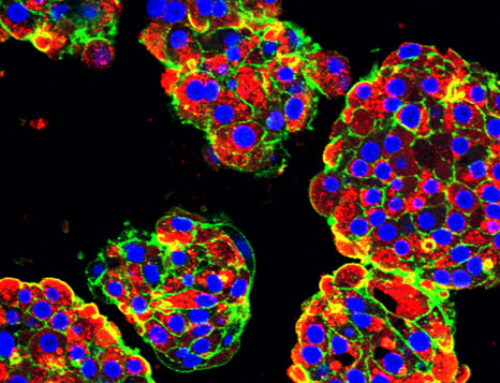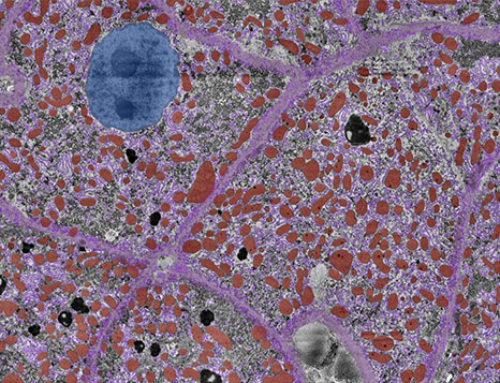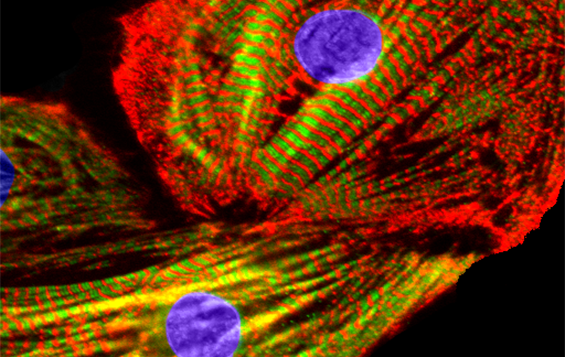
Lab-grown cardiomyocytes (heart muscle cells) from the Laflamme Lab, which contract and exhibit cardiac markers (red and green). Image provided by Michael Laflamme.
A team led by Michael Laflamme, a clinician-scientist at the McEwen Stem Cell Institute at UHN, is developing a novel injectable cell therapy to repair hearts damaged by heart attack or disease. Made from stem cells, the therapy targets scar tissue to turn it back into muscle. Eventually, this therapy could replace the need for a heart transplant.
Laflamme, a cardiac pathologist, examines hearts after they’ve been removed for a transplant or because a patient has died, often because of the scarcity of donor hearts.
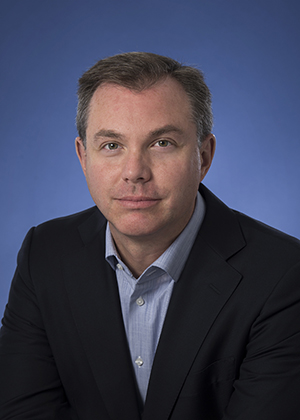
Michael Laflamme, clinician-scientist, University Health Network.
“Right now, the only way we can replace the muscle is to give the person a new heart, but there are not enough hearts to go around,” says Laflamme.
This reality pushes the team —made up of eight labs from U of T, UHN, The Hospital for Sick Children and Sunnybrook Research Institute — to rapidly advance their therapy, which guides stem cells through the process of becoming functional cardiac cells. The team has received more than $3.5 million in Medicine by Design funding.
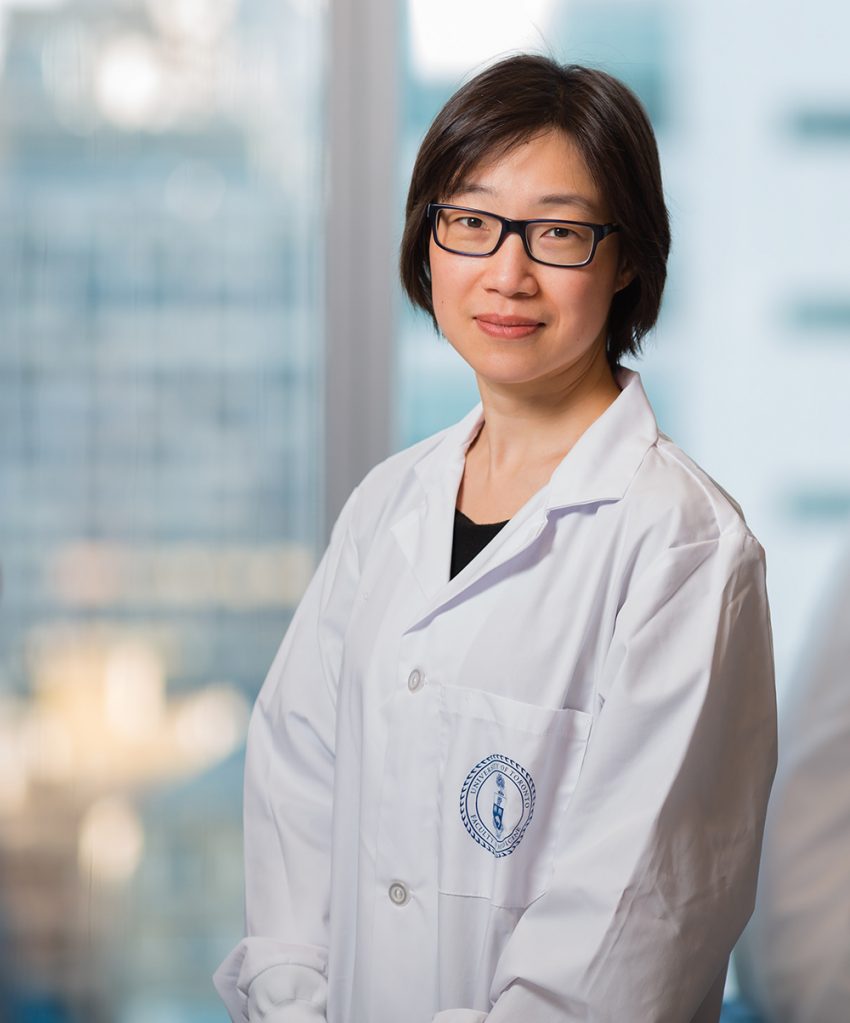
Hai-Ling Margaret Chen, associate professor, Institute of Biomedical Engineering, University of Toronto.
Laflamme and his collaborators continue to refine their cell therapy. He aims for an approximate three- to five-year timeline for first-in-human clinical testing. In the meantime, aspects of the project, such as a cutting-edge platform to track therapeutic cells after they are transplanted developed, by Hai-Ling Margaret Chen (associate professor, Institute of Biomedical Engineering, U of T), are progressing towards the clinic with funding from Medicine by Design’s Pivotal Experiment Fund.
Back to “Five ways Medicine by Design is transforming treatment for cardiac disease.”
